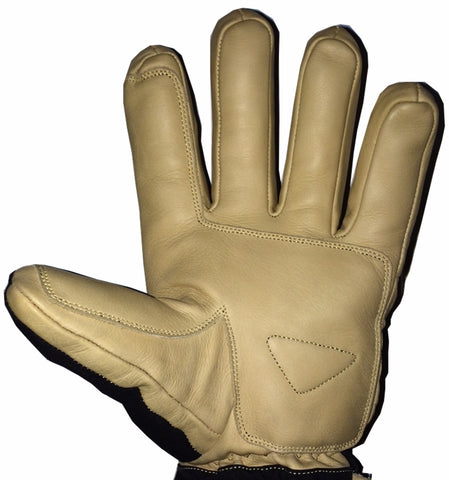Ski Patrol Gloves | Mountain Work
 Our whole concept is a better priced ski glove for serious skiers, like Ski Patrol. Our design concept is maximum dexterity, grip and toughness without sacrificing warmth. But we have even better deals for ski patrollers: Send us an email with a photo of your employee pass and we will send you our Pro Form information (non-sale items).
Our whole concept is a better priced ski glove for serious skiers, like Ski Patrol. Our design concept is maximum dexterity, grip and toughness without sacrificing warmth. But we have even better deals for ski patrollers: Send us an email with a photo of your employee pass and we will send you our Pro Form information (non-sale items).
Free the Powder Gloves conducts research and development and field testing with the Ski Patrol at Park City Canyons, Utah, Alta Ski Area, Bridger Bowl, Montana and other locations across ski country. Special thanks are owed to Brian Silvey, Paul Santana, Thomas "TJ" Johnson, Timmy Nickel, Eric Smith and Gus Gilman for doing their best to beat the crap out of our prototype gloves. I also want to acknowledge the Park City Canyons Ski Patrol for taking so much of their time to discuss ski glove design.
We learned a lot from talking to the ski patrol about the demands needed in a winter work glove. We learned their likes and dislikes regarding gloves, and we also learned that they have a different set of variables they deem vital than the backcountry skiers like our head designer - me.

Ski Patrolling requires a unique set of glove design variables for optimum performance. Those variables include:
1) Toughness: Ski patrolling is so brutal on gloves that almost every ski patrol we spoke to and worked with sacrificed dexterity, grip, and warmth for toughness. To make an even stronger point about toughness, NO glove was tough enough to warrant a high cost. Mostly they choose inexpensive insulated work gloves because no quality gloves could even-come-close to holding up to hours per day of running rope line, pulling toboggans, lugging signs around, and on and on. Ski patrolling is highly abrasive on the palm of the glove.
I myself have spent many, many seasons wearing insulated work gloves and they just DO NOT CUT IT for grip and dexterity, so something better is needed. Most cheap gloves are made of pigskin, which has poor grip. That better something has to be tough, to get a working man or woman to spend hard earned money on it.
So we use leather, 1-2 mm, with a reinforcement patch that covers all areas of high wear on the palm. The type of leather is also important: properly tanned and treated cowhide is the toughest and softest leather, with the best combination for grip and dexterity. It’s what cattle ranchers use.
2) Grip: For the best grip, the palms of your gloves need to be made of soft, grippy leather that has been tanned specially for that purpose. The surface of your hands need to be free of sweat or dreaded clamminess, so maximum breathability is essential.

3) Dexterity: The twin brother/sister of grip. The best dexterity comes from premium, soft, grippy leather that molds to the shape of the hand. That is greatly assisted by utilizing a liner and insulation that is thinner and less lofty, such as Breathefil™. Dexterity is also assisted by a short-cuff wrist closure with Velcro. The bigger the Velcro patch, the better the ultimate fit. We also offer a super-easy-on-off long cuff as well.
4) “Water-resistance”: Water-resistance is important, but not at the expense of maximum breathability. The water-proofing should come from DWR, durable water repellent that is engineered into the leather and fabrics of the glove. Also, regular use of leather treatment water-proofer is essential to keep the leather from drying out and maintaining water-resistance. Current technology of water-proof insert membranes puts you on a slippery slope of functionality, which decreases the versatility of the gloves.
5) Warmth: Obviously ski patrolling is performed in the cold, but it is very active, so you need a glove with moderate levels of insulation, like a backcountry ski glove. A good amount is 200 grams.



Free the Powder are the perfect ski patrol gloves.

